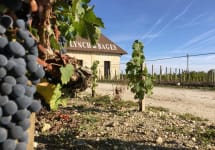Chateau Lynch-Bages 2010
-
James
Suckling -
Robert
Parker - Decanter
-
Wine
Enthusiast -
Wine
Spectator -
Wilfred
Wong
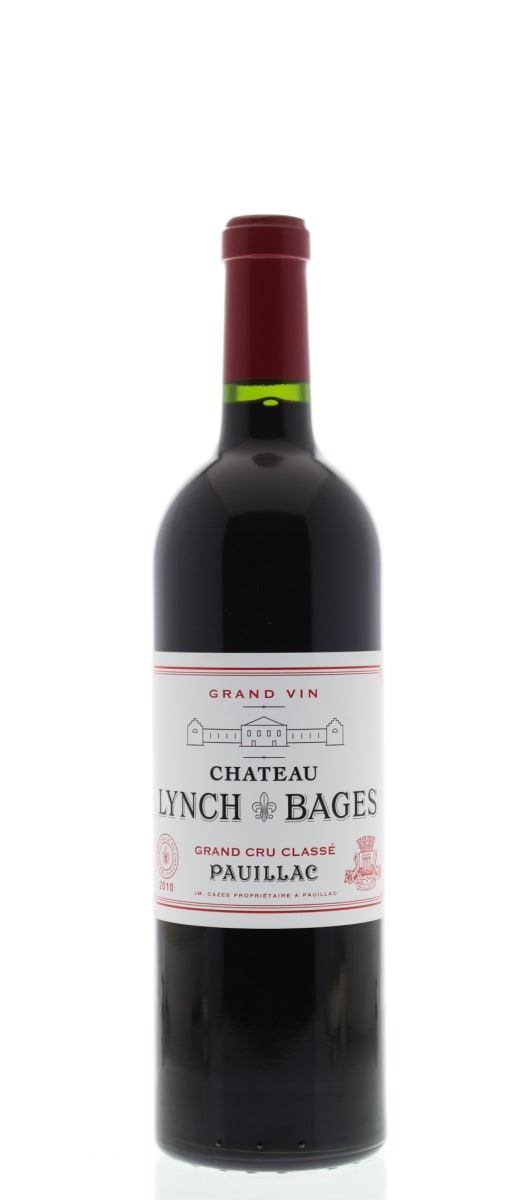



Product Details
Your Rating
Somm Note
Winemaker Notes
Blend: 79% Cabernet Sauvignon, 18% Merlot, 2% Cabernet Franc, 1% Petit Verdot
Professional Ratings
-
James Suckling
What incredible precision and clarity here. Currants, mineral, mint and lead pencil. Full body, with super refined A wine with great beauty and finesse. Such elegance and ethereal quality for this estate. Full body, with ultra-fine tannins and a juicy delicious finish. Long and beautiful. This is the best Lynch in a long, long time. I love the precision here.
-
Robert Parker's Wine Advocate
Still a saturated ruby-black in hue, the 2010 Lynch-Bages offers up aromas of rich cassis fruit mingled with hints of pencil shavings, loamy soil and cigar wrapper. Full-bodied, deep and muscular, it's rich and layered, with a concentrated core of fruit that's framed by firm, powdery tannins and lively acids. The most brooding, backward Lynch-Bages of the decade and one of the real successes of the vintage, this is a vibrant, tightly wound wine that is still an infant at age 10. Readers with bottles in their cellars might try one now out of curiosity, but this 2010 won't begin to hit its stride until age 20.
-
Decanter
Deep inky purple in colour, this is a majestic Pauillac to be savoured by Bordeaux lovers. Again we are far from it being ready to drink and the tannins continue to be dominant, although not hiding the layers of rich earthy loam, slate, pencil lead and concentrated cassis that lie underneath. It's impressive and built, muscular, taut and architectural. An excellent reflection of what 2010 brought to the wines in this corner of the Médoc. It's not the most enticing for drinking today; give it another few years to soften and open further, or really allow it to have a good four to five hours in a carafe. But there is no mistaking the future of this wine.
-
Wine Enthusiast
This sumptuous wine is driven by perfectly ripe fruit as well as dense, dusty and dry tannins. Great swathes of blackberry sweep across the palate, followed by juicy acidity. Such a combination will make this impressive wine a delight to drink in 10 years and beyond. Cellar Selection.
-
Wine Spectator
Roasted cedar, tobacco and bay leaf notes start off this structured but lively bottling, with intense currant, blackberry and black cherry flavors at the core. The iron-laced grip and pleasantly austere plum pit and licorice snap accents fill in on the tar-tinged finish. Great range, character and typicity. If you ever need to explain Pauillac to someone, give them this. Best from 2018 through 2037.
-
Wilfred Wong of Wine.com
As classic as can be, the 2010 Chateau Lynch Bages epitomizes Pauillac like few other wines; focused red and black currant aromas, with a shaving of pencil lead; firm on the palate and plenty fine with sweet tannins; beautifully focused flavors of the same in the flavors; long finish. This one will need a few years to settle down and then it is going to pretty fine. (Best Served: 2018-2031)
Other Vintages
2024-
James
Suckling - Vinous
-
James
Suckling - Vinous
-
Jeb
Dunnuck - Decanter
-
Robert
Parker
-
Wilfred
Wong -
Jeb
Dunnuck -
James
Suckling - Decanter
-
Wine
Spectator -
Robert
Parker
-
Wine
Enthusiast -
James
Suckling - Decanter
- Vinous
-
Wine
Spectator -
Jeb
Dunnuck -
Robert
Parker
-
James
Suckling -
Wine
Enthusiast -
Wilfred
Wong - Decanter
-
Jeb
Dunnuck -
Wine
Spectator -
Robert
Parker
-
Jeb
Dunnuck - Decanter
-
James
Suckling -
Wine
Spectator -
Robert
Parker
-
Jeb
Dunnuck -
James
Suckling -
Wine
Spectator - Decanter
-
Wine
Enthusiast -
Robert
Parker -
Wilfred
Wong
-
Wine
Enthusiast -
James
Suckling - Decanter
-
Jeb
Dunnuck -
Wine
Spectator -
Robert
Parker
-
Wine
Spectator -
Robert
Parker -
James
Suckling - Decanter
-
Jeb
Dunnuck -
Wine
Enthusiast -
Connoisseurs'
Guide
-
Wine
Enthusiast -
James
Suckling - Decanter
-
Jeb
Dunnuck -
Wine
Spectator -
Wilfred
Wong -
Robert
Parker
-
James
Suckling -
Robert
Parker - Decanter
-
Wine
Enthusiast -
Wine
Spectator -
Jeb
Dunnuck
-
Wine
Enthusiast -
James
Suckling -
Wine
Spectator -
Wilfred
Wong
-
Wine
Enthusiast -
James
Suckling -
Wine
Spectator -
Robert
Parker -
Wilfred
Wong - Decanter
-
Robert
Parker -
Wine
Enthusiast -
Wine
Spectator -
James
Suckling - Decanter
-
Wine
Enthusiast -
Robert
Parker -
Connoisseurs'
Guide -
Wine
Spectator
-
Robert
Parker -
Wine
Enthusiast -
Wine
Spectator -
James
Suckling -
Connoisseurs'
Guide -
Wine &
Spirits
-
Wine
Enthusiast -
James
Suckling -
Wine &
Spirits -
Wine
Spectator -
Robert
Parker -
Connoisseurs'
Guide
-
Wine
Enthusiast -
Wine &
Spirits
-
Robert
Parker -
Wine
Enthusiast -
Wine
Spectator
-
Robert
Parker -
Wine
Spectator
-
Robert
Parker -
Wine
Spectator
-
Robert
Parker -
Jeb
Dunnuck -
Wine
Spectator -
James
Suckling -
Wine
Enthusiast -
Wine &
Spirits
-
Robert
Parker
-
Wine &
Spirits -
Wine
Spectator
-
Robert
Parker -
Wine
Spectator
-
Wine
Spectator
-
Robert
Parker -
Wine
Spectator
-
Robert
Parker -
Wine
Spectator -
James
Suckling
-
Wine
Spectator -
Robert
Parker
-
Robert
Parker -
Wine
Spectator
-
Wine
Spectator -
Robert
Parker
-
James
Suckling -
Robert
Parker -
Wine
Spectator

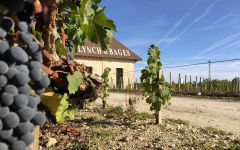
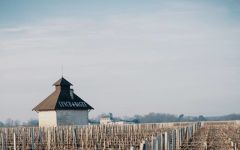
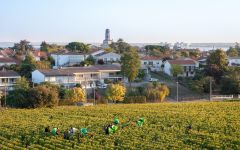
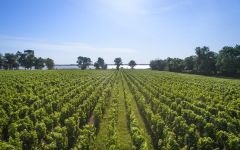
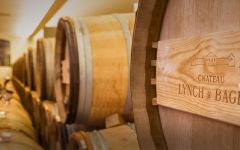

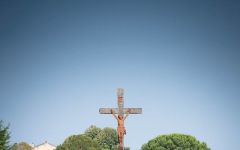
The grapes are all hand picked and then carefully sorted before crushing. A very strict selection is made prior to blending and the wine is traditionally aged in oak barrels before bottling.

One of the world’s most classic and popular styles of red wine, Bordeaux-inspired blends have spread from their homeland in France to nearly every corner of the New World. Typically based on either Cabernet Sauvignon or Merlot and supported by Cabernet Franc, Malbec and Petit Verdot, the best of these are densely hued, fragrant, full of fruit and boast a structure that begs for cellar time. Somm Secret—Blends from Bordeaux are generally earthier compared to those from the New World, which tend to be fruit-dominant.

The leader on the Left Bank in number of first growth classified producers within its boundaries, Pauillac has more than any of the other appellations, at three of the five. Chateau Lafite Rothschild and Mouton Rothschild border St. Estephe on its northern end and Chateau Latour is at Pauillac’s southern end, bordering St. Julien.
While the first growths are certainly some of the better producers of the Left Bank, today they often compete with some of the “lower ranked” producers (second, third, fourth, fifth growth) in quality and value. The Left Bank of Bordeaux subscribes to an arguably outdated method of classification that goes back to 1855. The finest chateaux in that year were judged on the basis of reputation and trading price; changes in rank since then have been miniscule at best. Today producers such as Chateau Pontet-Canet, Chateau Grand Puy-Lacoste, Chateau Lynch-Bages, among others (all fifth growth) offer some of the most outstanding wines in all of Bordeaux.
Defining characteristics of fine wines from Pauillac (i.e. Cabernet-based Bordeaux Blends) include inky and juicy blackcurrant, cedar or cigar box and plush or chalky tannins.
Layers of gravel in the Pauillac region are key to its wines’ character and quality. The layers offer excellent drainage in the relatively flat topography of the region allowing water to run off into “jalles” or streams, which subsequently flow off into the Gironde.
